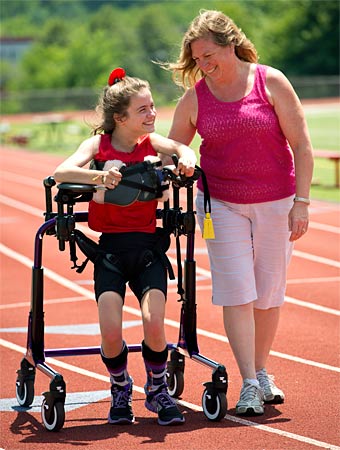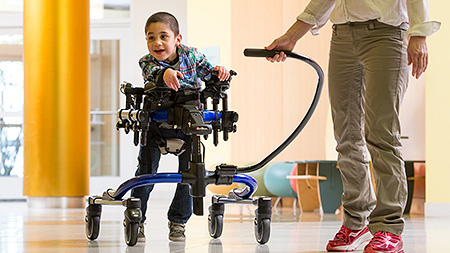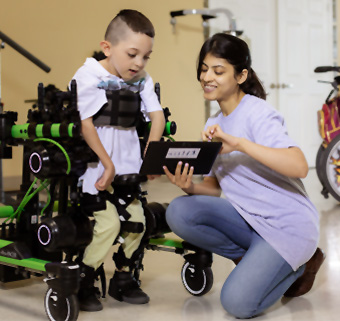Evidence Update: Motor Impairments and Gait Training: A Systematic Review
| February 2015 As professionals who have worked with children with poor motor control, we have no doubt about the importance of a gait trainer. Using gait trainers for upright positioning and ambulation practice for children unable to walk independently has been a long-standing intervention in clinics, schools and homes. But we’ve all lamented the dearth of solid clinical research to support what we’ve observed for years and what we now know instinctively about the benefits of gait training in this population.
As professionals who have worked with children with poor motor control, we have no doubt about the importance of a gait trainer. Using gait trainers for upright positioning and ambulation practice for children unable to walk independently has been a long-standing intervention in clinics, schools and homes. But we’ve all lamented the dearth of solid clinical research to support what we’ve observed for years and what we now know instinctively about the benefits of gait training in this population.
Recently two thought leaders in our field took us all a big step forward in this regard. Ginny Paleg and Roslyn Livingstone completed a systematic review of the evidence available on gait training for children with disabilities, and their findings are going to be published in an upcoming issue of Clinical Rehabilitation.
The design of the review focused on the specific question: For children with motor impairments, which outcomes are positively influenced by a gait trainer intervention? Of the seventeen studies included in the review, most of them were lower level studies. But all of them indicated good outcomes for children with motor impairments using gait trainers, such as increased mobility, number of steps, speed, distance and increased independence.
This led the researches to conclude that “evidence supporting outcomes for children using gait trainers is primarily descriptive and, while mainly positive, is insufficient to draw firm conclusions."
Nevertheless, this study lays the ground-work for future research in this area and leaves us with two important clinical messages:
1. Gait trainers may assist development of independent stepping and walking distance for some children who are unable to walk without support.
2. Observational evidence suggests that gait trainers may have a positive impact on body structure and function, activity and participation outcomes.
Our thanks to Ginny and Roslyn.
Resource: Paleg G, Livingstone R. Outcomes of gait trainer use in home and school settings for children with motor impairments: a systematic review. Clin Rehabil. 2015. [Epub ahead of print]




